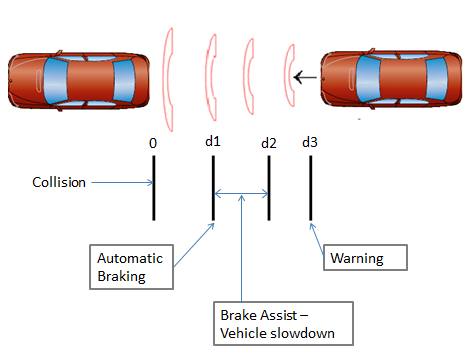
Automatic Braking System coming to all new cars in less than 8 years!
Automatic emergency braking or AEB systems a standard feature on practically all new vehicles sold in the U.S. by 2022 according to a new plan from the National Highway Traffic Safety Administration and the Insurance Institute for Highway Safety.
Automatic brakes are designed to stop a vehicle before it collides with a car or another object. Experts say that making them standard could prevent as much as 20 percent of accidents.
AEB systems are usually coupled with another tech breakthrough called "forward collision warning" which scans the road ahead then warns the driver if the car is about to crash. This allows drivers to take action to slow down the car or completely stopping the car. The AEB system will react when the driver cannot or does not take the needed action to avoid a collision.
How's it work? Electronic sensors installed in the manufacturing of the vehicle on the front of the car detect and electronically measure the distance of a car ahead. Warnings given by the system could be alarms via noises, vibrations or visual cues. Some AEB systems will be designed to give the driver a mixture of warnings also gives a mix of these warnings. The AEB systems also brakes automatically as a warning to the driver.
Of course, AEB systems are not fool-proof and drivers should not entirely depend on them and they must stay alert as always. AEB will not avoid all accidents but merely this system will reduce the number of accidents. And, of course, drivers should always maintain a safe driving distance with the car ahead especially at higher speeds on highways, heed all traffic signals and maintain concentration and alertness.
Since the AEB system technology relies on sensors signals can be interrupted by snow, ice or dirt. The sensors should be cleaned regularly for ensuring proper function.
According to experts, the AEB systems can reduce rear end crash by 40 percent which is a sizable number making . NHTSA's announcement is another step as an optional feature that will soon become a standard feature for ensuring auto safety and reducing road accidents.